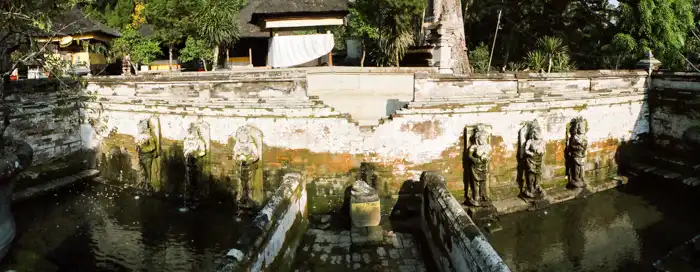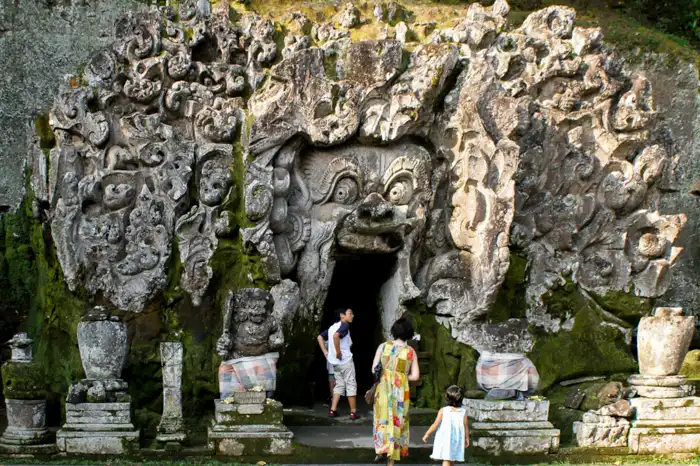Goa Gajah stands as a testament to Bali’s rich cultural and spiritual heritage. Its mysterious cave, ancient carvings, and tranquil gardens offer a unique journey into the past. This historic site is a must-visit for those looking to explore Bali’s historical depth and spiritual essence.
Discovering Goa Gajah: Bali’s Mystical Elephant Cave
Introduction
Goa Gajah, or the Elephant Cave, is a significant historical site in Bali, Indonesia. This ancient sanctuary mesmerizes visitors with its rich history, intriguing architecture, and spiritual ambiance. Located near Ubud, Goa Gajah dates back to the 9th century. It serves as a window to Bali’s fascinating past.
Goa Gajah is a ruins, but like other Bali ruins, it is still treated as a temple and holy place, and it is necessary to pay attention to clothing, such as not putting out shin when entering Goa Gajah. If you visit with shorts or short skirts, you will be instructed to wrap your waist at the entrance and lend you the cloth.

Goa Gajah is famous as the “Elephant Cave”. But attractions are not only the cave. Pay attention to the surroundings and you will gain even more insight.

Historical Significance
The real origins of Goa Gajah are in mystery. People have used it as a spiritual place for meditation. The site’s name, “Elephant Cave,” does not come from elephants found in Bali. Instead, it is believed to be linked to the Hindu god Ganesh, known for his elephant head. The cave’s entrance, a menacing mouth of a demon, is a masterpiece of Balinese sculpture, designed to protect the sacred site from evil spirits.
Exploring Goa Gajah
The screaming mouth of the entrance to the cave greet you. It leads into a dark, narrow passage. Inside, the cave has several areas. They are meditation spaces and a place for prayer. The central figure is a statue of Ganesh, adding to the cave’s mystical atmosphere.

Surrounding the cave, lush gardens, and ancient relics, including bathing pools and fountains, invite exploration. These water features with stone carvings of women might have been the place for ritual purification.


Cultural and Spiritual Experience
This place is not just an archaeological site; it is a spiritual destination. The serene atmosphere and sacred artifacts offer a unique insight into Balinese Hinduism and its practices. Visitors can absorb the spiritual energy and reflect on the ancient rituals that have taken place here.

Access and Best Time to Visit
Located just outside of Ubud, it is easily accessible by car or motorbike. The best time to visit is early in the morning or late in the afternoon to avoid the crowds and experience the site’s tranquility. The rainy season, from November to March, brings lush greenery, enhancing the beauty of the surrounding landscape.
Goa Gajah Tours
Several tours that includes places around Ubud visit the Elephant Cave. One of those is Best of Ubud Attractions: Private All-Inclusive Tour. You can join this tour from Ubud, Denpasar and Kuta. Please check the starting points before you choose a tour.